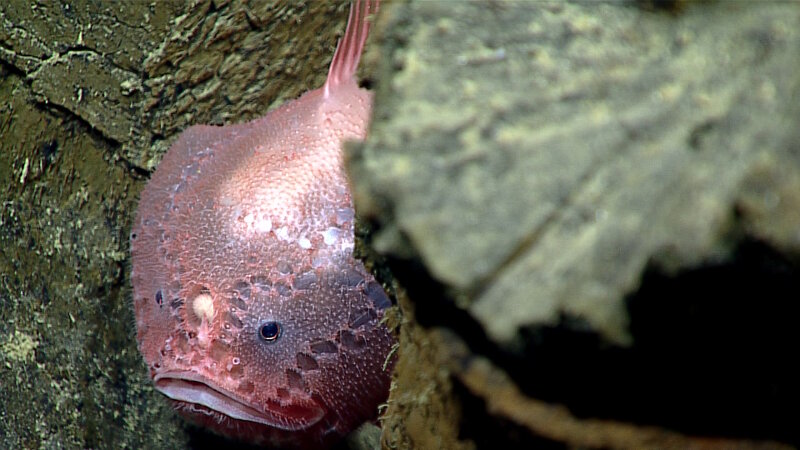On Dive 10, we explored an area where hydrothermal indicators (chemical and particulate anomalies) had been detected on a recent expedition on the Schmidt Ocean Institute R/V Falkor. While hydrothermal vents are known on other parts of the Marianas back-arc spreading center, this area has had only minimal exploration. Although we were all aware that chasing hydrothermal indicators does not always lead to finding something, we were optimistic that we might be successful in our search. The remotely operated vehicle reached the bottom at 3,916 meters within a field of pillow lavas. Based on the sediment cover, these flows were significantly older than the fresh, glassy pillow lavas seen on Dive 9. We transited upslope to the top of a pillow mound, where we found a "haystack," a steep-sided eruptive vent with very long, stringy pillow lavas emerging out of the vent. However, we did not see indications of hydrothermal venting, such as iron staining, microbial mats, or vent-endemic animals. We traversed the valley, noting a transition in pillow morphology from the western to eastern mounds – the western flows had many little pillow toes and protuberances, while the eastern pillows were smoother and lacked extrusions. Towards the end of our transit through the valley, we came across a mysterious area of small, ropy, stick-like talus. We then moved up another pillow mound and found another haystack eruptive vent. Again, we found no signs of hydrothermal venting. We left the bottom to transit to our final waypoint, where we climbed a slope of pillow talus and ascended another sheer wall of broken pillows. At and near this eruptive vent we found pillows that were very thin and stringy. We collected two geological samples near the top of this last slope. There were very few organisms encountered throughout the dive, and we made no biological collections. We saw anemones (actiniarians), shrimps, brisingid and porcellanaster sea stars (asteroids), and many different species of sea cucumbers (holothurians). Fish encountered included cusk eels (Ophidiidae) and a deep-sea anglerfish (Chaunacops). While we were unable to confirm the water column evidence of hydrothermal venting, we still had a very interesting dive in terms of geology.
